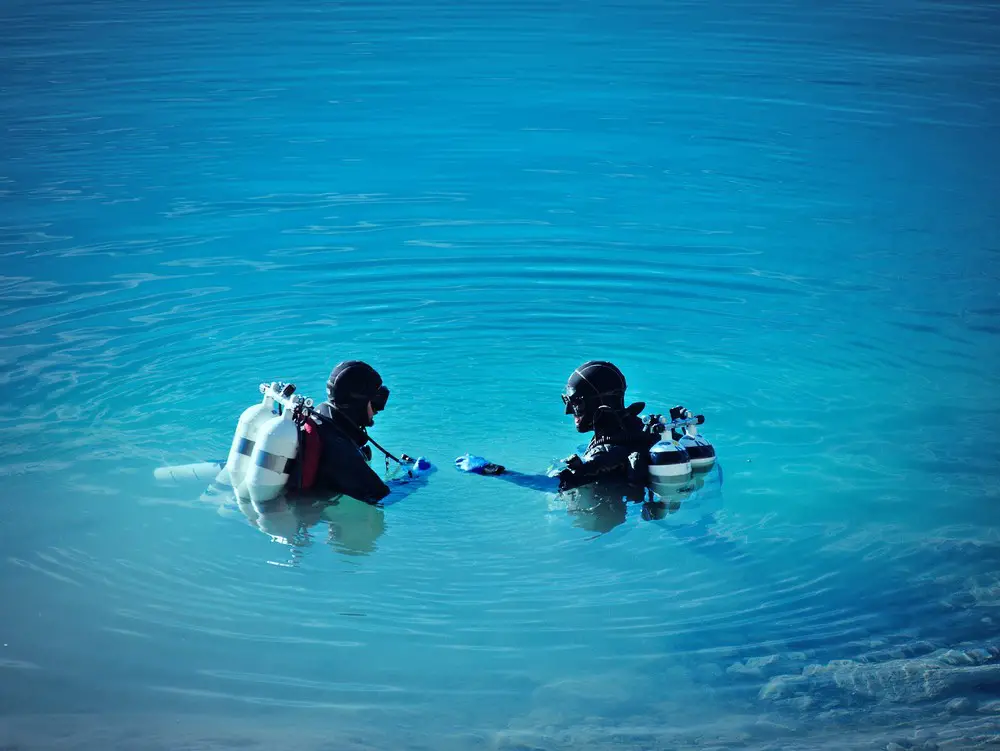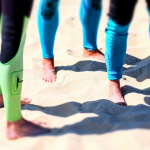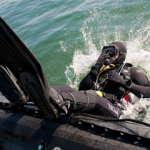
If you are new to scuba diving, or if you are considering taking up scuba diving as your hobby, you may be wondering; do you need a wetsuit to scuba dive?
In many cases a wetsuit is necessary for scuba diving. A wetsuit provides thermal insulation, which helps to keep your body warm in colder water. Even in relatively warm water, a wetsuit can provide some protection against abrasions and stings from marine life.
The thickness of the wetsuit you need will depend on the water temperature you’ll be diving in. Thicker wetsuits provide more insulation and are suitable for colder water, while thinner wetsuits are designed for warmer conditions.
Additionally, wetsuits also offer some degree of protection against the sun’s ultraviolet (UV) rays and potential scrapes or cuts from rocks or other sharp objects underwater. They also provide buoyancy and help with streamlining your body, which can enhance your comfort and efficiency in the water.
However, in certain circumstances, such as diving in very warm tropical waters, a wetsuit may not be necessary. In such cases, some divers opt for rash guards or dive skins, which are lightweight, stretchy garments that provide minimal insulation and protection.
Ultimately, it’s important to consider the water temperature, your personal comfort, and any specific safety recommendations from dive professionals or local authorities when deciding whether or not to wear a wetsuit for scuba diving.
For example, I even where a 3mm wetsuit to dive in Barbados, where the water temperature is around 29.4°C (84.9°F). I have seen the diver master shiver when he comes up when he doesn’t where a wetsuit in these water temperatures.
Can you scuba dive without a wetsuit?
You can scuba dive without a wetsuit, particularly in warm-water environments. In tropical regions where water temperatures are consistently high, some divers choose not to wear wetsuits and instead opt for other types of protective gear such as rash guards or dive skins.
Rash guards and dive skins are lightweight, stretchy garments that provide minimal insulation but offer protection against the sun’s UV rays and potential scrapes or stings from marine life. These garments are often sufficient for divers in warm-water conditions where maintaining body heat is not a concern.
It’s important to note that while you can dive without a wetsuit in warm water, a wetsuit does offer additional benefits such as thermal insulation and protection against minor cuts or abrasions. Furthermore, if you’re diving in cooler waters, a wetsuit is essential to prevent hypothermia and maintain your comfort and safety.
When deciding whether or not to wear a wetsuit, consider factors such as water temperature, personal comfort, and any specific safety recommendations provided by dive professionals or local authorities.
If you may be interested to learn more about liveaboard diving boats as a way to enjoy diving and to get more diving experience. If you are please take a look at the following window:
At what depth do you need a wetsuit?
The need for a wetsuit while scuba diving is primarily determined by water temperature rather than depth. Water temperature tends to decrease as you go deeper, but the rate at which it decreases can vary depending on various factors such as location, season, and depth profile.
As a general guideline, if you’re diving in water below 24°C (75°F), it is recommended to wear a wetsuit for thermal protection, regardless of the depth. However, the thickness of the wetsuit needed may vary based on the water temperature and personal preference.
In colder water, typically below 18°C (64°F) or lower, a thicker wetsuit is necessary to provide adequate insulation. These wetsuits are often 7mm thick or more and may be complemented by accessories such as hoods, gloves, and boots to further minimise heat loss.
However, at these lower temperatures I would choose to wear a drysuit instead as these keep you much warmer in colder waters.
In warmer water, such as tropical regions with temperatures above 24°C (75°F), divers may choose to forego wearing a wetsuit or opt for thinner wetsuits, rash guards, or dive skins for protection against the sun, marine life, and minor abrasions.
It’s important to note that the specific temperature threshold for requiring a wetsuit may vary among individuals, and factors like personal tolerance to cold and duration of the dive should also be considered. Always consult local diving experts, consider safety recommendations, and make informed decisions based on the conditions you’ll be diving in.
What temperature do you need a wetsuit for scuba diving?
The temperature at which you need a wetsuit for scuba diving depends on various factors, including personal comfort, duration of the dive, and your individual tolerance to cold. However, as a general guideline:
- Below 24°C (75°F): If the water temperature falls below 24°C, it is generally recommended to wear a wetsuit for thermal protection. This is especially important for longer dives, as prolonged exposure to colder water can lead to hypothermia or discomfort.
- 18-24°C (64-75°F): In this temperature range, divers often opt for wetsuits of varying thicknesses depending on their personal preference and comfort level. Thinner wetsuits, such as 3mm or 5mm, are commonly used to provide some insulation while allowing for more freedom of movement.
- Below 18°C (64°F): Water temperatures below 18°C typically necessitate thicker wetsuits (or semi-drysuits or drysuits) to provide adequate warmth. Wetsuits with thicknesses of 7mm or more, along with accessories like hoods, gloves, and boots, may be required to minimise heat loss in colder conditions. But it is at these4 lower temperature ranges where drysuits are best to keep you warm when scuba diving.
It’s important to remember that these temperature ranges are general guidelines, and local conditions, personal factors, and dive duration can influence your specific needs. Always consult with local diving experts, consider safety recommendations, and assess your comfort level before determining the appropriate wetsuit thickness for a particular dive.
I hope you enjoyed this article about do you need a wetsuit to scuba dive
I’d love to hear from you. Tell us about your adventures of diving and snorkeling, in the comments below. Please also share your photos. Either from your underwater cameras or videos from your waterproof go-pro’s!
If this article hasn’t answered all of your questions. If you have more questions either about snorkeling or scuba diving (or specifically about do you need a wetsuit to scuba dive), please comment below with your questions.
There will also be many more articles about scuba and scuba diving safety tips (and on snorkeling too) for you to read and learn about this fabulous sport.



